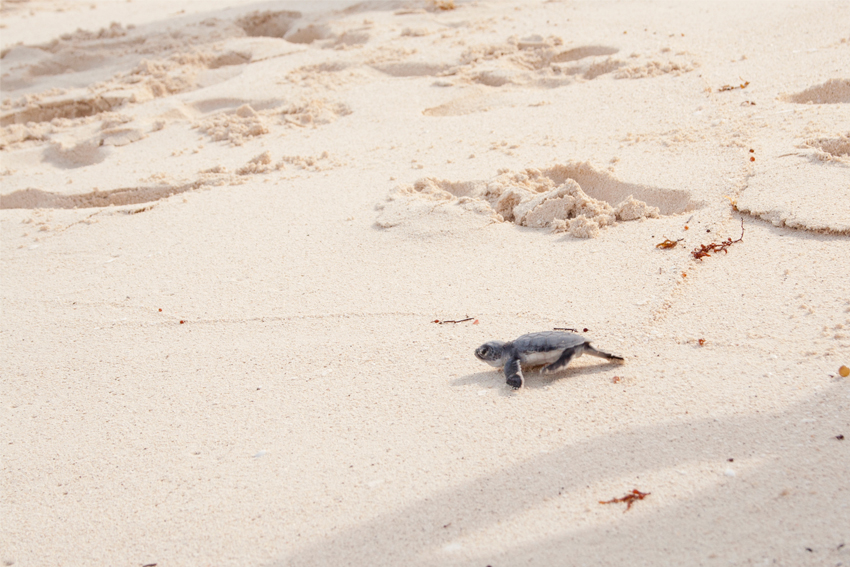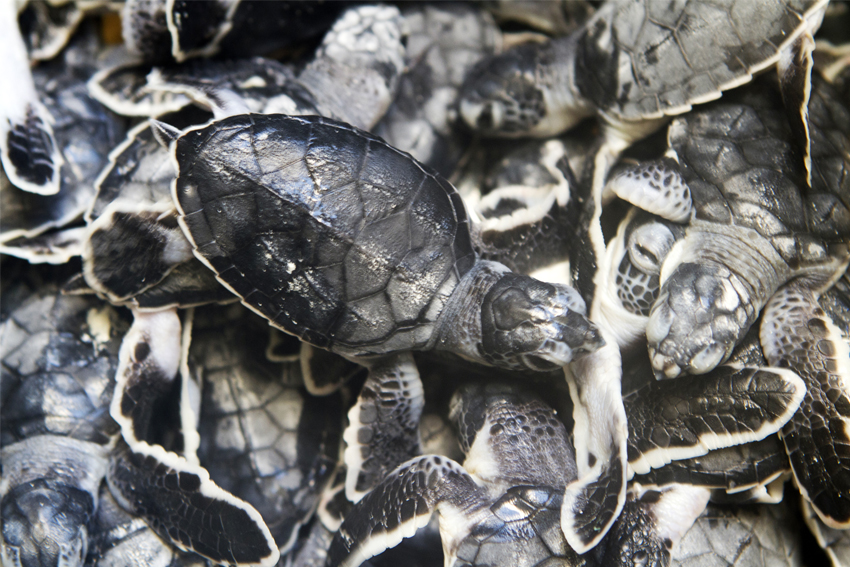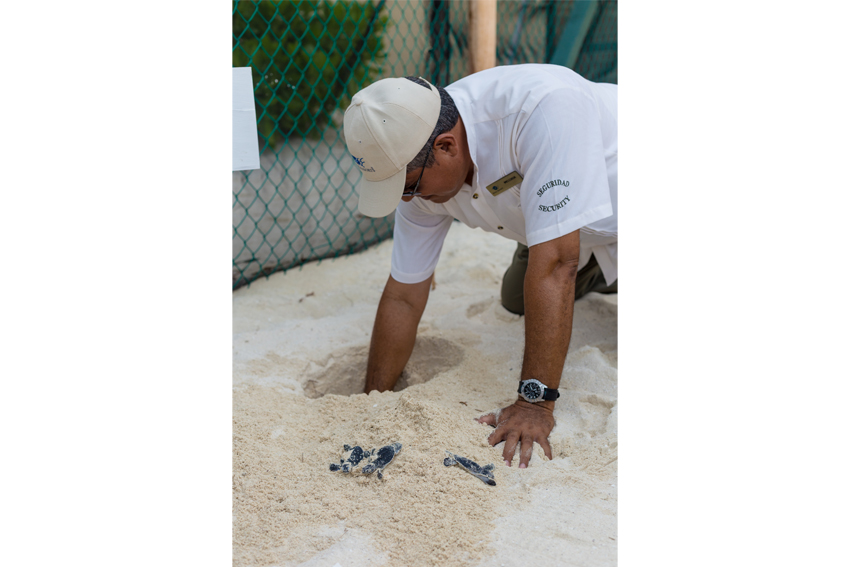May marks the start of the sea turtle season in the Mexican Caribbean. During the summer nights, thousands of female sea turtles will emerge from the waves to dig nests in the sand and lay their eggs. Royal Resorts is gearing up to watch over these maritime visitors and their precious offspring born later in the season.
From May to September, female green, loggerhead and hawksbill turtles struggle ashore to lay their eggs on the beaches of Cancun, the Riviera Maya, Isla Mujeres, Contoy, Holbox, Cozumel, Sian Ka’an and the Costa Maya in southern Quintana Roo. Forty-five to 60 days later, the eggs will hatch, and the baby turtles will break free of the shells and race across the beach towards the waves and a new life at sea. In 12 to 15 years, some of them will return to lay their own eggs on the same beach, repeating the eternal cycle.
Royal Resorts is a Cancun turtle protection pioneer
Royal Resorts is proud to do its part to protect this ancient species that has been swimming the oceans for around 120 million years. A Cancun conservation pioneer, Royal Resorts has been watching over sea turtles since 1985. We began record keeping in 1998 and since then we have protected 9,951 nests and released 925,371 baby turtles!
Turtle nesting is cyclical: a good season with lots of eggs and hatchlings is followed by a slow year. However, 2019 and 2020 were both good years, the beaches were empty last summer due to the pandemic and the turtles came ashore in huge numbers all along the coast. At Royal Resorts we protected 815 nests and we hope that the 2021 turtle season in the Mexican Caribbean will be just as busy.
The Royal Resorts turtle guardians
The Royal Resorts turtle guardians, our security guards, are ready to begin their summer vigil. Night after night, they will patrol the beaches in search of nesting turtles. When they find one, they watch over her as she digs her nest and lays her eggs. They move the eggs to a nursery where they dig another nest identical in shape and depth to the original. They write down the species, date and time of nesting and number of eggs and watch over the nest.
When the baby turtles emerge, the guards release them after dark when predatory seabirds such as gulls and frigate birds have gone to roost.
Follow the turtle season rules
If you are going to stay at Royal Resorts or Grand Residences this summer, please join us in protecting our turtle visitors. Follow the turtle rules:
- Alert the security staff when you see a turtle on the beach at night
- Be very quiet and keep still, noise, lights and the movement of people disturb nesting sea turtles and cause them to leave the beach without laying eggs
- Watch from a distance of 10 meters (33 feet)
- Do not attempt to touch the turtle or crowd her
- Do not shine a torch or use the light on your mobile phone
- No flash photography
- No smoking
- Obey security staff when they give instructions
- Help us to keep our beaches and sea clean. Plastic straws, bags, packaging, fishing lines and nets and other garbage floating in the water are lethal to turtles and other marine life
- When snorkeling or diving watch turtles from a distance, do not swim towards them and do not attempt to touch them
- Wear a t-shirt when snorkeling as protection from the sun instead of applying sun block. Sun products pollute the water and are harmful to marine life
- Turtles are protected by Mexican law and it is illegal to disturb them, persecute or hunt them and consume their meat or eggs.
The Mexican environmental agency SEMARNAT rules for turtle nesting season are designed to keep human contact with the creatures to a minimum. The rules stipulate that fragile baby turtles can only be released by trained personnel and not by hotel guests. Failure to comply with these measures can lead to resorts losing the right to have turtle nurseries on site or to be part of the turtle protection campaign.



